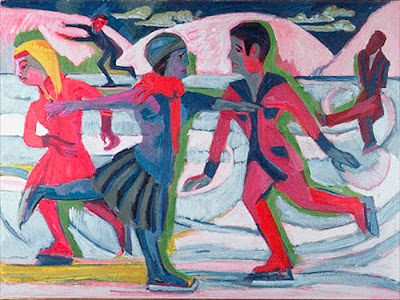George Caleb Bingham, "Canvassing For A Vote"

Do look carefully at our painting for this week. I am sure when George Caleb Bingham (1811-1879) painted it in 1852 he intended it to be quite serious. But today, 170 some years later, it only makes me smile, and actually giggle a little. Let's learn a little bit about our artist. Bingham was a true American. When he was 8 years old, he and his family moved to Missouri, and established a home on the Missouri River, which was then the eastern terminus of the Santa Fe Trail. I am sure in 1818 this was pretty wild country. As he grew and developed as an artist, his paintings of American frontier life are those best remembered and appreciated today. He did get training as an artist. As a young man he spent time at the Pennsylvania Academy of Art, then later traveled to Paris and Dusseldorf, Germany to study. But the main portion of his life was back in Missouri. When the Civil War broke out Bingham became a Union officer and at its conclusion, started a career in po


